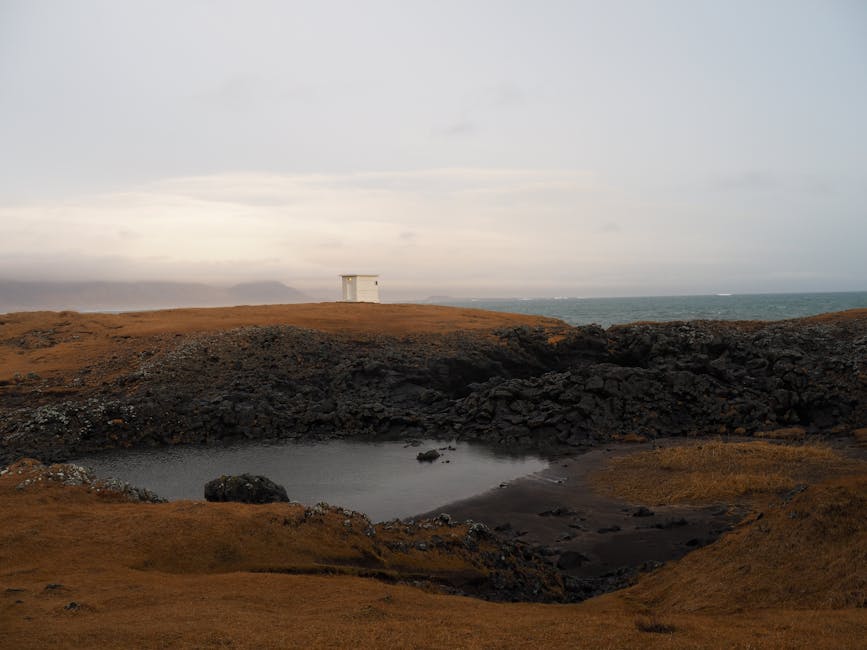Key Takeaways
- Microclimate refers to the specific atmospheric conditions that exist within a small, localized geopolitical area, often influenced by unique geographic or human factors.
- Macroclimate encompasses broader climatic patterns that affect large geopolitical regions, shaping national or continental environmental policies and strategies.
- Microclimates can vary dramatically within a single city or district, while macroclimates provide an overarching framework for regional climate classification.
- Understanding microclimates is essential for localized urban planning and agricultural practices, whereas macroclimates guide long-term governmental and international climate agreements.
- The interaction between microclimate and macroclimate factors often determines the environmental conditions experienced by communities at different scales.
What is Microclimate?

Microclimate refers to the climate conditions prevailing in a small, specific geopolitical area, distinct from the surrounding regions. These conditions are often shaped by localized factors such as terrain, vegetation, and human activities.
Localized Geographic Influences
Topography plays a critical role in creating microclimates within small geopolitical boundaries. For example, a valley within a city can experience cooler temperatures and higher humidity compared to adjacent elevated areas, impacting local living conditions and resource management.
Urban structures like buildings and roads alter air flow and heat retention, generating distinct microclimates known as urban heat islands. This effect can lead to higher temperatures in downtown districts relative to suburban neighborhoods, influencing energy consumption and public health.
Bodies of water such as lakes or rivers within a political district moderate temperature extremes, often creating milder microclimates that affect local agriculture and biodiversity. These water-influenced microclimates are critical in city zoning and emergency planning.
Human Impact and Urban Planning
Human land use patterns, including green spaces and industrial zones, significantly shape microclimates within municipal boundaries. Parks and tree-lined streets tend to lower temperatures and improve air quality in their immediate surroundings.
Conversely, dense industrial areas contribute to localized pollution and temperature elevation, complicating efforts to maintain environmental standards. Urban planners must consider these effects when designing sustainable cities and residential areas.
Infrastructure such as transportation networks also affects microclimatic conditions by altering wind patterns and heat distribution. For instance, highways can act as barriers to airflow, creating pockets of stagnant air that exacerbate pollution.
Microclimate’s Role in Local Agriculture
Farmers rely on microclimate knowledge to optimize crop selection and planting schedules within their specific land parcels. Variations in sunlight, moisture, and temperature within small fields influence yield and pest management strategies.
Microclimates can protect certain crops from frost or drought by creating favorable micro-environments, offering a competitive advantage at the district or municipal level. This localized climate variability requires precise monitoring tools to maximize agricultural productivity.
Community gardens and urban farms often exploit microclimates to extend growing seasons in neighborhoods, enhancing food security and local economies. These efforts highlight how microclimates support grassroots sustainability initiatives.
What is Macroclimate?

Macroclimate describes the general climate patterns that prevail over extensive geopolitical regions such as countries or continents. These large-scale climate features influence national policies related to environment, economy, and public welfare.
Regional Climate Zones and Their Impact
Macroclimates define broad climatic zones like temperate, tropical, or arid regions, which shape the overall environmental conditions of countries or large states. These zones determine the suitability of land for various economic activities including agriculture, tourism, and energy production.
Governments use macroclimate data to forecast weather trends that affect infrastructure development and disaster preparedness. For example, regions prone to monsoons or droughts enact specific building codes and water management policies.
Macroclimates also influence population distribution by affecting livability and resource availability in different parts of a nation. Areas with harsh macroclimatic conditions may see lower population densities due to limited economic opportunities.
Influence on National and International Policies
National climate strategies are often informed by macroclimate trends that forecast long-term environmental changes such as desertification or glacial retreat. These trends guide investments in renewable energy and conservation efforts on a broad scale.
International agreements on climate change rely on macroclimate data to assess global warming impacts and coordinate cross-border responses. Countries negotiate emission targets and adaptation measures based on their macroclimatic vulnerabilities.
Macroclimate monitoring systems, such as satellite networks, provide governments with data essential for climate modeling and risk assessment across geopolitical boundaries. This information supports the formulation of policies aimed at mitigating climate-related hazards.
Macroclimate and Economic Planning
Economic sectors like agriculture, forestry, and fisheries depend heavily on macroclimate patterns for strategic planning and resource allocation. National governments tailor subsidies and insurance programs based on predicted macroclimatic conditions.
Energy production, particularly renewable sources like wind and solar, is planned according to the macroclimate characteristics of a region to maximize efficiency. For example, solar farms are typically located in areas with high annual sunlight exposure.
Macroclimate data also informs transportation infrastructure development by anticipating climate-induced challenges such as flooding or heat stress on roads and railways. This forward-looking approach reduces long-term maintenance costs and enhances resilience.
Comparison Table
The table below illustrates key distinctions between microclimate and macroclimate in the context of geopolitical boundaries.
| Parameter of Comparison | Microclimate | Macroclimate |
|---|---|---|
| Scale of Influence | Localized to small districts or neighborhoods within a city or rural area | Spans countries, large states, or continents |
| Primary Determinants | Specific terrain features, urban structures, vegetation, and water bodies | Latitude, altitude, ocean currents, and large-scale atmospheric circulation |
| Variability | Highly variable over short distances and times | Relatively stable over broader regions and longer periods |
| Data Collection Methods | Local weather stations, ground sensors, and field surveys | Satellite imagery, regional climate models, and meteorological networks |
| Application in Policy | Guides urban planning, zoning, and local environmental management | Shapes national climate policies, disaster response, and international negotiations |
| Impact on Population | Influences neighborhood comfort, health, and property values | Determines regional settlement patterns and economic opportunities |
| Influence on Agriculture | Guides crop selection and micro-farming practices | Dictates large-scale agricultural zones and food security strategies |
| Adaptation Strategies | Localized interventions such as green roofs or street tree planting | Broader measures including water resource management and energy policy shifts |
| Temporal Scale | Short-term fluctuations and seasonal changes within a small area | Long-term climatic trends over decades or centuries |
| Examples | A shady park in a city center, riverside neighborhoods | Climate zones like Mediterranean, continental, or tropical rainforest regions |
Key Differences
- Spatial Extent — Microclimate focuses on confined geographic pockets while macroclimate covers vast regions across political boundaries.
- Data Resolution — Microclimate analysis requires high-resolution, localized data, whereas macroclimate relies on aggregated, large-scale datasets.
- Policy Impact Level — Microclimate knowledge influences municipal or district-level decisions, while macrocl